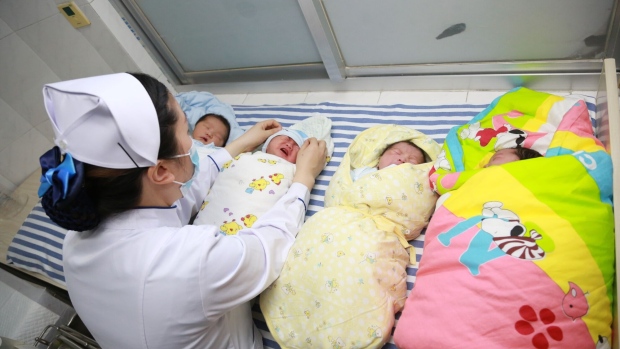Jul 2, 2024
IVF Coverage Expanded as China Works to Boost Births
, Bloomberg News

(Bloomberg) -- China’s eastern economic hub Jiangsu extended medical insurance coverage to a slew of assisted reproductive services, the latest region heeding Beijing’s call to reverse the mainland’s declining birth rate.
Starting this week, services ranging from sperm extraction to in-vitro fertilization, or IVF, will be reimbursed in 35 of Jiangsu’s medical facilities, according to a notice from the provincial medical security bureau.
Jiangsu joins at least 10 Chinese regions — from megacities Beijing and Shanghai to provinces across the country — in having assisted reproduction be covered by health insurance, data from the National Health Security Administration show. More provinces are set to follow suit, including Anhui, which said last month that it will gradually extend insurance coverage to some of the services.
Several Chinese stocks linked to reproductive health and infant care rose on the news. Hong Kong-listed Jinxin Fertility Group Ltd. jumped as much as 4% in morning trading Tuesday, while childrens’ apparel maker Annil Co. was up as much as 6.2% onshore.
Alleviating the cost of often pricey fertility procedures makes them more accessible, especially to couples willing to have children but facing reproductive challenges. The move is part of a broader set of measures aimed at reversing China’s declining birth rate and addressing demographic challenges, as its population ages and its workforce shrinks.
The Chinese government’s initiatives to encourage childbearing include relaxing its one-child policy, financial incentives, extended maternity leave and childcare support. Still, authorities face hurdles in coaxing people to have children amid growing concerns about China’s slowing economy, the high cost of raising kids and pregnancy-related discrimination in workplaces.
China saw its population drop for the second consecutive year in 2023, and was overtaken by India as the world’s most populous country. Just over 9 million babies were born last year, the lowest number since the founding of the People’s Republic in 1949.
--With assistance from Kelly Li.
(Updates with stock moves in 4th paragraph.)
©2024 Bloomberg L.P.


